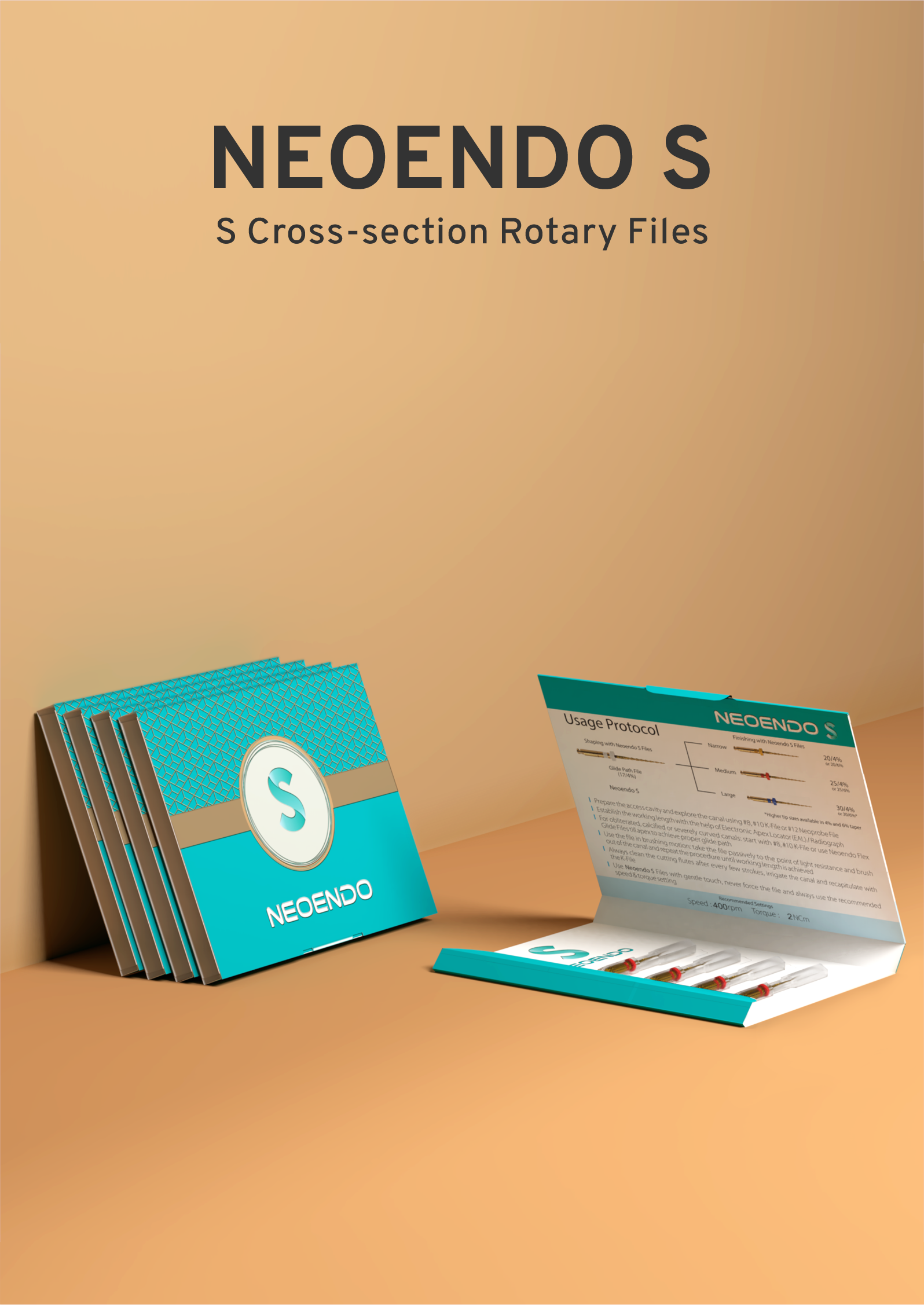Project Description
Neoendo Flex Rotary Files
- NiTi Endodontic Rotary Files
- Utilize a proprietary heat treatment
- Tough file with unique flexibility
- Flutes do not open up when stress levels are reached
- Yet, doesn’t present shape memory
- Cross-section – Triangular rotary files with sharp cutting edges
- Non-cutting safety tip
- Most cases require just 2 to 3 rotary files
- Simple usage protocol
- Speed: 350 RPM
- Torque: 1.5 Ncm
Description
Neoendo S rotary file is designed to have a special S-shaped cross-section. This allows minimum radial wall contact which translates to reduced stress on the file. In addition, the excellent upward debris auguring ensures that the debris isn’t pushed apically or packed into the apical third. Further, proprietary heat treatment ensures that the file remains highly flexible and resistant to fracture.
Cross-section- The cross-section of files is like the alphabet “S”
Sharp Cutting Edge- The two-blade cutting surface increases the cutting efficiency
Flexible NiTi Wire- Proprietary heat-treated NiTi wire with high fracture resistance
Progressive Pitch- Progressively increasing pitch avoids the screw-in effect
Safety Tip- Non-cutting safety tip helps to reduce ledge formation, minimize canal transportation & reduce apical extrusion
Length Marking- Helps to control the working length during preparation
Tip Size Indicator- The colored ring indicates the tip of the instrument
Taper Indicator- One ring-0.04 Taper | Two Rings- 0.06 Taper
Sizes
- Lengths: 21mm, 25mm
- Sizes: 17 | 20 | 25 | 30 | 35 | 40
- Taper: 4% | 6%
- Colour coding: Easy identification of tip size
- Taper indicator:
- 1 ring on the shank- 4%
- 2 rings on the shank- 6 %
Usage Protocol
- Prepare the access cavity and explore the canal using #8, #10 K-file or #12 Neoprobe File
- Establish the working length with the help of Electronic Apex Locator(EAL)/ Radiograph
- For obliterated, calcified, or severely curved canals: start with #8, #10 K-File or use Neoendo Flex Glide Files till apex to achieve proper glide path
- Use the file in brushing motion: take the file passively to the point of least resistance and brush out of the canal and repeat the procedure until the working length is achieved
- Always clean the cutting flutes after every few strokes, irrigate the canal and recapitulate with the K-File
- Use Neoendo S files with a gentle touch, never force the file and always use the recommended speed and torque settings
- Recommended Speed- 400 RPM, Torque- 2 NCm



